|
||||||||||||||||||||||
![Home - Air Power Australia Website [Click for more ...]](APA/APA-Title-Main.png) |
||||||||||||||||||||||
![Sukhoi PAK-FA and Flanker Index Page [Click for more ...]](APA/flanker.png) |
![F-35 Joint Strike Fighter Index Page [Click for more ...]](APA/jsf.png) |
![Weapons Technology Index Page [Click for more ...]](APA/weps.png) |
![News and Media Related Material Index Page [Click for more ...]](APA/media.png) |
|||||||||||||||||||
![Surface to Air Missile Systems / Integrated Air Defence Systems Index Page [Click for more ...]](APA/sams-iads.png) |
![Ballistic Missiles and Missile Defence Page [Click for more ...]](APA/msls-bmd.png) |
![Air Power and National Military Strategy Index Page [Click for more ...]](APA/strategy.png) |
![Military Aviation Historical Topics Index Page [Click for more ...]](APA/history.png)
|
![Intelligence, Surveillance and Reconnaissance and Network Centric Warfare Index Page [Click for more ...]](APA/isr-ncw.png) |
![Information Warfare / Operations and Electronic Warfare Index Page [Click for more ...]](APA/iw.png) |
![Systems and Basic Technology Index Page [Click for more ...]](APA/technology.png) |
![Related Links Index Page [Click for more ...]](APA/links.png) |
|||||||||||||||
![Homepage of Australia's First Online Journal Covering Air Power Issues (ISSN 1832-2433) [Click for more ...]](APA/apa-analyses.png) |
||||||||||||||||||||||
| Last Updated: Mon Jan 27 11:18:09 UTC 2014 | ||||||||||||||||||||||
|
||||||||||||||||||||||
|
||||||||||||||||||||||
![Home - Air Power Australia Website [Click for more ...]](APA/APA-Title-Main.png) |
||||||||||||||||||||||
![Sukhoi PAK-FA and Flanker Index Page [Click for more ...]](APA/flanker.png) |
![F-35 Joint Strike Fighter Index Page [Click for more ...]](APA/jsf.png) |
![Weapons Technology Index Page [Click for more ...]](APA/weps.png) |
![News and Media Related Material Index Page [Click for more ...]](APA/media.png) |
|||||||||||||||||||
![Surface to Air Missile Systems / Integrated Air Defence Systems Index Page [Click for more ...]](APA/sams-iads.png) |
![Ballistic Missiles and Missile Defence Page [Click for more ...]](APA/msls-bmd.png) |
![Air Power and National Military Strategy Index Page [Click for more ...]](APA/strategy.png) |
![Military Aviation Historical Topics Index Page [Click for more ...]](APA/history.png)
|
![Intelligence, Surveillance and Reconnaissance and Network Centric Warfare Index Page [Click for more ...]](APA/isr-ncw.png) |
![Information Warfare / Operations and Electronic Warfare Index Page [Click for more ...]](APA/iw.png) |
![Systems and Basic Technology Index Page [Click for more ...]](APA/technology.png) |
![Related Links Index Page [Click for more ...]](APA/links.png) |
|||||||||||||||
![Homepage of Australia's First Online Journal Covering Air Power Issues (ISSN 1832-2433) [Click for more ...]](APA/apa-analyses.png) |
||||||||||||||||||||||
| Last Updated: Mon Jan 27 11:18:09 UTC 2014 | ||||||||||||||||||||||
|
||||||||||||||||||||||
| MiG's
I.42/44 MFI - A First Look |
||||
|
||||
|
Probably the biggest international aviation event of January was the public rollout of Russia's new MFI (Mnogo-Funktsionalniy Istrebitel - Multi-Role Fighter). The MFI was originally planned as a replacement for the Su-27 family, providing a high performance fighter capable of challenging the US Advanced Tactical Fighter. The rollout was preceded by the limited release of photographs, and accompanied by public briefings for the Russian media, and a number of very interesting statements about the aircraft, some of which have produced considerable controversy. The aircraft is similar in size to the Flanker family and can be expected to have a similar or slightly lower fuel fraction. The aircraft's basic configuration most closely resembles that of the early eighties Lockheed ATF proposal, before it was abandoned in favour of the YF-22 design, without the Lockheed's RCS reducing nose chining. The exception is the forward fuselage, inlet and canard configuration, which are best described as being very similar to that used in the EFA Typhoon demonstrator.
The delta canard has a wing sweep between 40 and 45 degrees. with a pronounced vortex generating dogtooth on the canard. The very large wing has a slender section, three sets of trailing edge control surfaces, and pronounced ventral actuator fairings. External pylons are visible on many of the photographs. The stated intent of the delta canard configuration was to provide for excellent high AoA performance, and low supersonic energy bleed, evidently by avoiding the trim drag associated with a conventional configuration. The paired, outwardly canted vertical stabilisers are attached to a pair of large tailbooms, which house aft looking avionics and enclose the innermost trailing edge surfaces. The latter may be used for balancing the aircraft's trim at supersonic cruise speeds, although not details have been disclosed. Two ventral keels protrude beneath the vertical stabilisers, mounted on the tailbooms. The aft fuselage is dominated by the paired and closely spaced Lyulka/Saturn AL-41F afterburning turbofans. These are to be fitted with circular thrust vectoring nozzles, which will be limited to 2D vertical vectoring should the existing tailboom arrangement be retained for production aircraft. The large single mainwheels retract forward into the fuselage, close to the wing roots. The fuselage geometry provides for a modest inlet tunnel S-bend, which will reduce the inlet tunnel and compressor face RCS should absorbent linings be employed. A pronounced dorsal spine is employed and is presumably employed for control runs and accessories, given the tight engine placement. The inlet and nose layout is similar in general configuration to the Eurofighter Typhoon, with the exception of pronounced fairing at the canard roots, which have RCS reducing leading edge faceting. The inlets are variable, ventrally mounted, and feature a classical Flanker/F-14 style stepped multiple shock design. Two supporting struts, angle outward to reduce RCS, are employed to evidently to stiffen the inlet and nose structure. The generous clearance between the upper inlet lip and lower nose is evidently intended to provide for good boundary layer separation at high AoA. The cockpit canopy and windshield are reminiscent of the MiG-29 series but will provide lesser aft visibility than the Su-27 series and Western teen series fighters due to the aft fairing into the spine. The structure is reported to comprise 30% composite materials, 35% aluminium lithium alloys, and 30% steel alloys. The radome on the photographed aircraft is clearly too small for a competitive air intercept radar and lends much credence to hotly disputed reports in Russia that the aircraft is the I.44 aerodynamic demonstrator rather than the I.42 prototype item. The distinction is moot in the sense that either way the aircraft on display is a meant to prove aerodynamics rather than avionic systems. Russian reports claim internal weapon carriage but do not specify the location of the weapon bays. The slender wing profile precludes embedded wing bays, and the size of the engines and location of the mains and inlet leave only the volume between the mains and aft of the inlet for internal bays. Vertical stacking of weapons may have been intended. These would be the R-77/77M Adder and possibly a variant of the R-74 Archer. The aircraft is aerodynamically clearlly very competitive against the Eurocanards and without doubt superior to the now aging teen series aircraft, especially in high AoA and supersonic BVR combat performance. With a superior fuel capacity and possibly higher thrust/weight ratio to the Eurocanards at a similar relative fuel loading, the aircraft may even outperform the Rafale and Typhoon, although in the absence of weight figures this is a somewhat speculative conclusion. The Russians have claimed that it will outperform the F-22A but this is unclear from published materials. A curious aspect of the various Russian reports are statements in which the aircraft is claimed to have RCS performance competitive with the F-22A. Even cursory analysis of the MFI design indicates that this cannot be the case. In particular the inlet and nose layout will be a major source of broadband wide angle RCS which the application of radar absorbers is unlikely to remedy. The beam aspect RCS will also be problematic, due to the vertical tails and keel surfaces, ventral wing stations and upper fuselage geometry. The absence of chining altogether on the nose will also contribute to beam and forward sector RCS. The conclusion which can be drawn is that the MFI may outperform the Eurocanards for RCS performance if radar absorbent materials are used generously, the nose chined, the fuselage wing interface and spine blended, and internal weapons carried. It will never be competitive with the edge aligned, faceted, and chined F-22A design (or the chined and blended YF-23 ATF demonstrator). The statements emanating from Russia clearly contradict the technically evident and have been described as a transparent marketing ploy, in the context of the somewhat byzantine post Soviet defence acquisition system. Some reports suggest that the airframe was designed up to eight years ago, and has languished unflown in a hangar for several years awaiting funding, as MiG-MAPO's export ambitions withered away. There appears to have been much acrimonious public debate in Russia concerning the aircraft, its potential in the face of the F-22, and whether funding it to production is appropriate, or whether it should merely be used as demonstrator. One US report suggests that export to the PRC or India is viewed in Russia as a serious proposition. Certainly export revenue from a major export order to either or both Asian powers would provide enough funding to complete the aircraft with an existing avionic package of Russian design, such as that used in the Su-30 series. An issue would be the scheduling of payments, since Russia's pool of domestic capital is virtually non-existent. Should the aircraft appear in the region during the next decade, it would further widen the gap which currently exists in capability between the deployed teen series fighters and the PLA-AF and InAF commitments to the Su-27 and Su-30 series aircraft. With the technological potential to match one for one the current Eurocanard designs, should the MFI carry competitive avionics and missiles, this would narrow the RAAF's choices in the F/A-18 replacement down to the F-22 alone, placing the government in a precarious commercial negotiating position if nothing else. In summary the good news about the MFI is that it will never be competitive with the F-22, and that much time will elapse if it ever deploys operationally. The bad news is that budgetary pressures are likely to lead to its first deployments, should it proceed, into this region.
|
||||
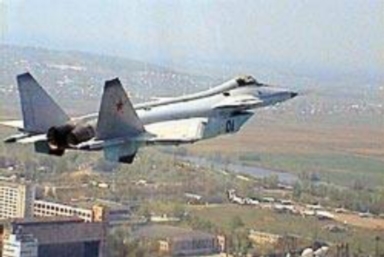 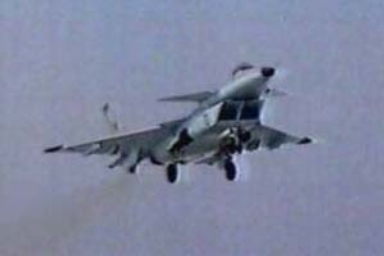 |
||||
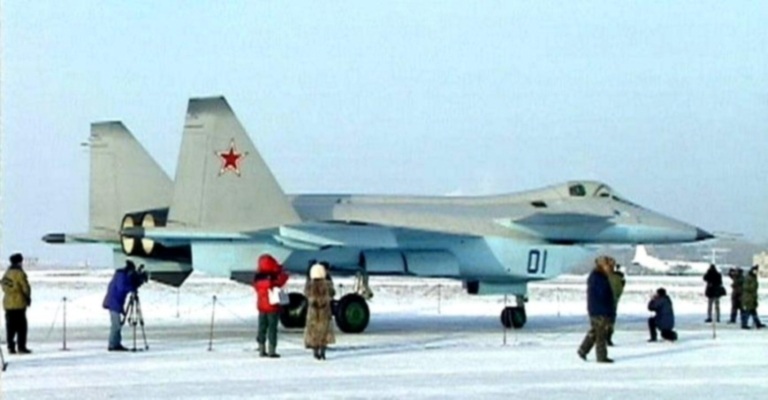 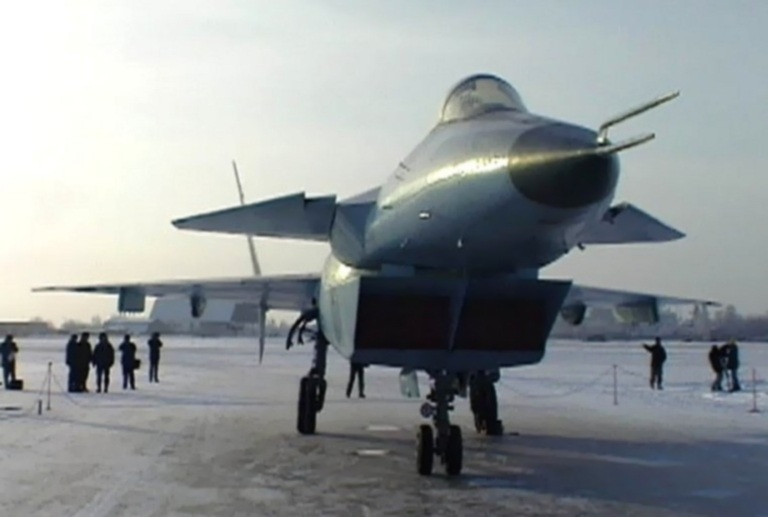 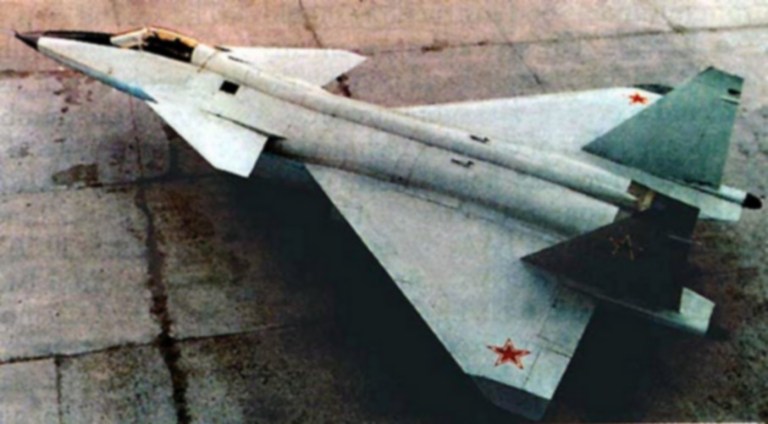 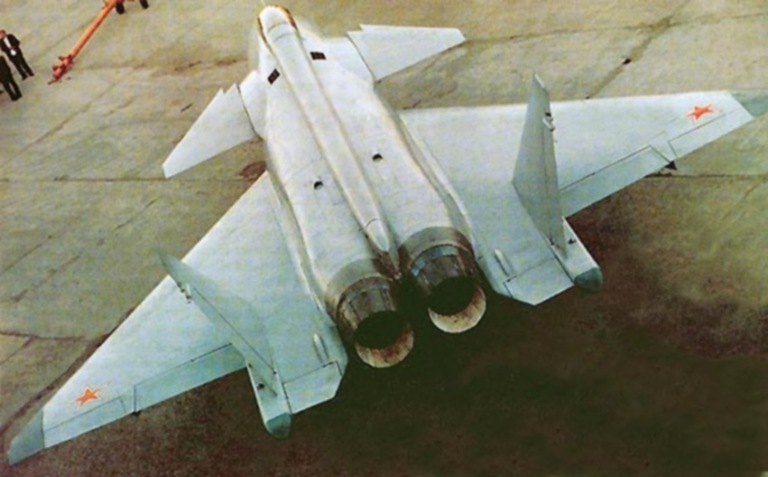 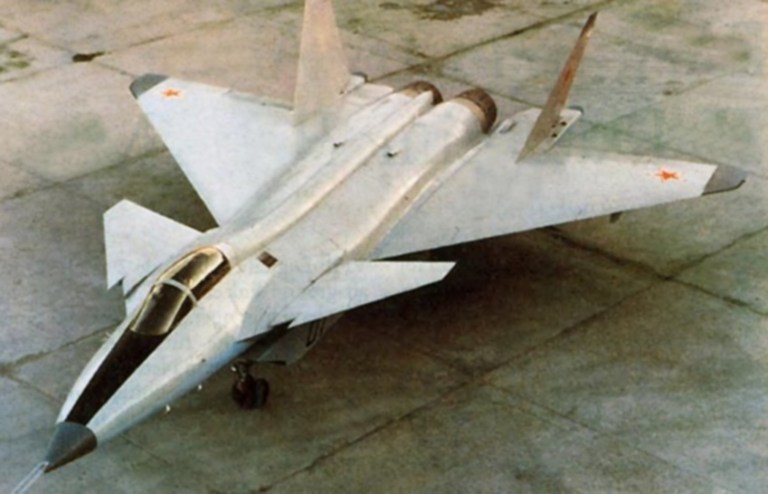 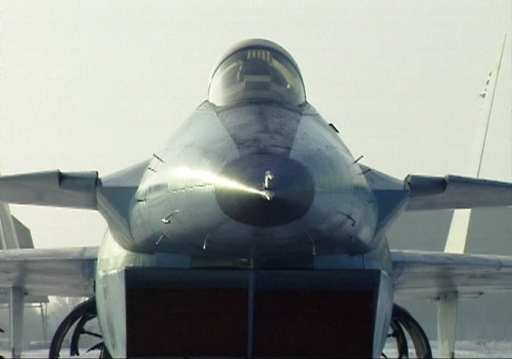 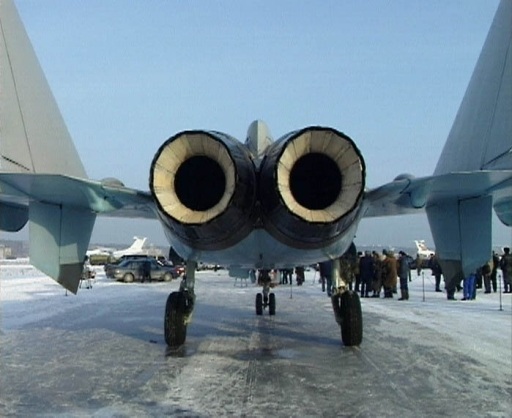 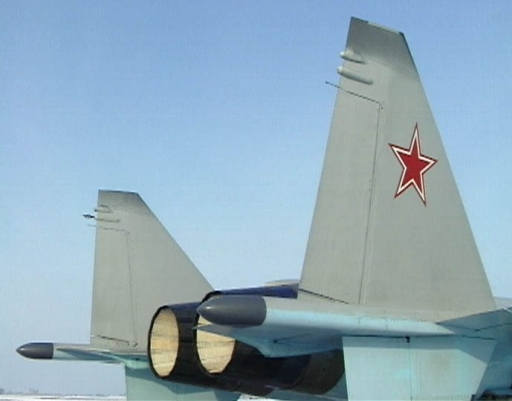 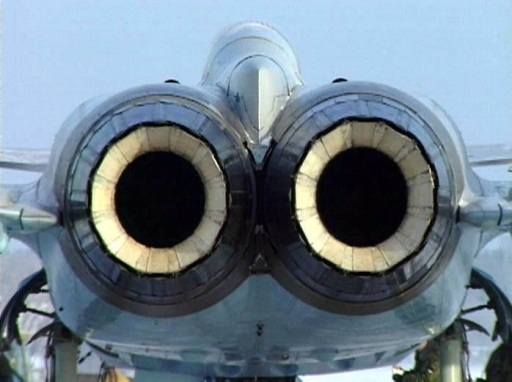 (All images via FAS) |
||||
|
|||||||||||||
![Sukhoi PAK-FA and Flanker Index Page [Click for more ...]](APA/flanker.png) |
![F-35 Joint Strike Fighter Index Page [Click for more ...]](APA/jsf.png) |
![Weapons Technology Index Page [Click for more ...]](APA/weps.png) |
![News and Media Related Material Index Page [Click for more ...]](APA/media.png) |
||||||||||
![Surface to Air Missile Systems / Integrated Air Defence Systems Index Page [Click for more ...]](APA/sams-iads.png) |
![Ballistic Missiles and Missile Defence Page [Click for more ...]](APA/msls-bmd.png) |
![Air Power and National Military Strategy Index Page [Click for more ...]](APA/strategy.png) |
![Military Aviation Historical Topics Index Page [Click for more ...]](APA/history.png)
|
![Information Warfare / Operations and Electronic Warfare Index Page [Click for more ...]](APA/iw.png) |
![Systems and Basic Technology Index Page [Click for more ...]](APA/technology.png) |
![Related Links Index Page [Click for more ...]](APA/links.png) |
|||||||
![Homepage of Australia's First Online Journal Covering Air Power Issues (ISSN 1832-2433) [Click for more ...]](APA/apa-analyses.png) |
|||||||||||||
| Artwork, graphic design, layout and text © 2004 - 2014 Carlo Kopp; Text © 2004 - 2014 Peter Goon; All rights reserved. Recommended browsers. Contact webmaster. Site navigation hints. Current hot topics. | |||||||||||||
|
Site Update
Status:
$Revision: 1.753 $
Site History: Notices
and
Updates / NLA Pandora Archive
|
|||||||||||||
|
|
Tweet | Follow @APA_Updates | |||||||||||
|
|
|||||||||||||
|
|
|||||||||||||